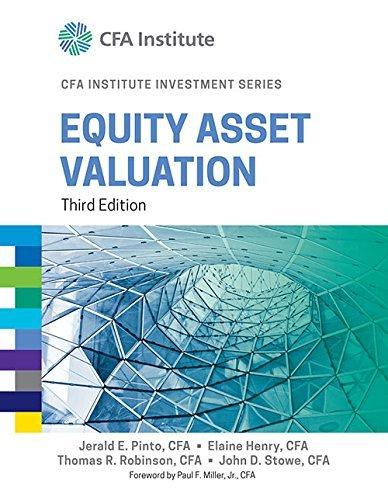Historical estimates of the equity risk premium in developing markets are often attended by a range of
Question:
Historical estimates of the equity risk premium in developing markets are often attended by a range of concerns. The case of India can serve as an example. A number of equity indexes are available and each has possible limitations. Although not as broad-based as the alternatives, the S&P BSE Sensex Index (Sensex), a market-capitalization weighted index of the shares of 30 leading companies, has the longest available record: Compiled since 1986, returns go back to 1979. Note the following facts concerning this index and other issues relevant to estimating the equity risk premium:
• The backfilled returns from 1979 to 1985 are based on the initial 30 issues selected in 1986, which were among the largest market-cap as of 1986.
• The Sensex is a price index; a total return version of the index incorporating dividends is available from 1997 forward.
• Interest rates in India were suppressed by regulation prior to 1991 and were much more volatile thereafter. The benchmark interest rate reported by the Reserve Bank of India has averaged 6.57 percent from 2000 until 2013, reaching an all-time high of 14.50 percent in August of 2000 and a record low of 4.25 percent in April of 2009.
In August 2013, the rate was 7.25 percent. The post-regulation period appears to be associated with higher stock market volatility.
• In 2000, the exchange used this index to open its derivatives market via the trading of Sensex futures contracts. The development of Sensex options followed in 2001.
• Valuation levels have changed significantly in the last two decades. The price-toearnings ratio for the Sensex was 45.5 in 1994 and reached a low of 13.0 in 1998. In August 2013, the price-to-earnings ratio was 17.3.
• Objective estimates of the extent of any bias can be developed.
Based only on the information given, address the following.
1. What factors could bias an unadjusted historical risk premium estimate upward?
2. What factors could bias an unadjusted historical risk premium estimate downward?
3. State and explain two indications that the historical time series is nonstationary.
4. Recommend and justify a preference for a historical or an adjusted historical equity risk premium estimate.
Step by Step Answer:






